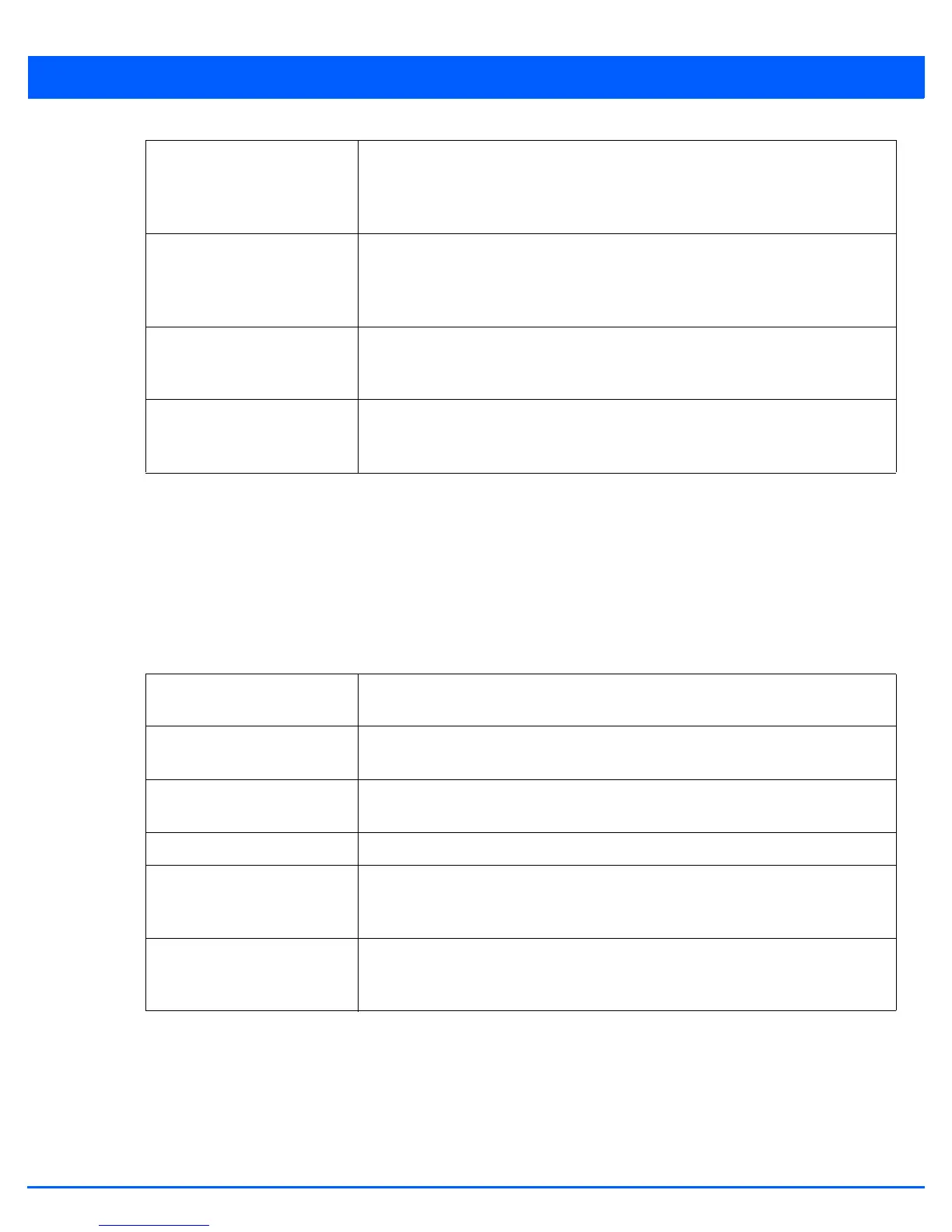5 - 358 WiNG 5.6 Access Point System Reference Guide
6. Refer to the System Event Messages field to define or override how system messages are logged and forwarded on
behalf of the profile.
Select the Enable System Events radio button to allow the profile to capture system events and append them to a log
file. It’s important to log individual events to discern an overall pattern that may be negatively impacting performance. This
settings is enabled by default.
Select the Enable System Event Forwarding radio button to enable the forwarding of system events. This setting is
enabled by default.
7. Refer to the Events E-mail Notification field to define or override how system event notification E-mails are sent.
8. Use the Configure drop-down menu within the Persist Configuration Across Reloads field to define whether the
access point saves a configuration received from a Virtual Controller AP to flash memory. The configuration would then be
made available if the this access point reboots and the Virtual Controller AP is not reachable. Options include Enabled,
Disabled and secure.
9. Use the HTTP Analytics section to define how data for analysis by an external engine is sent. Select Compress to
compress the data before sending. Use the Update Interval field to set the duration and set the time interval in minutes,
seconds or hours when the collected data is sent to the external analytics engine.
Console Logging Level Event severity coincides with the console logging level defined for the profile. Assign
a numeric identifier to log events based on criticality. Severity levels include
0 - Emergency, 1 - Alert, 2 - Critical, 3 - Errors, 4 - Warning, 5 - Notice, 6 - Info
and 7 - Debug. The default logging level is 4.
Buffered Logging Level Event severity coincides with the buffered logging level defined for the profile. Assign
a numeric identifier to log events based on criticality. Severity levels include
0 - Emergency, 1 - Alert, 2 - Critical, 3 - Errors, 4 - Warning, 5 - Notice, 6 - Info and
7 - Debug. The default logging level is 4.
Time to Aggregate Repeated
Messages
Define the increment (or interval) system events are logged on behalf of this profile.
The shorter the interval, the sooner the event is logged. Either define an interval in
Seconds (0 - 60) or Minutes (0 -1). The default value is 0 seconds.
Forward Logs to Controller Select this option to define a log level for forwarding event logs to the control. Log
levels include Emergency, Alert, Critical, Error, Warning, Notice, Info and Debug. The
default logging level is Error.
SMTP Server Specify either the Hostname or IP Address of the outgoing SMTP server where
notification E-mails are originated.
Port of SMTP If a non-standard SMTP port is used on the outgoing SMTP server select this option
and specify a port from 1 - 65,535 for the outgoing SMTP server to use.
Sender E-mail Address Specify the E-mail address that notification E-mails will be sent from. This will be the
from address on notification E-mails.
Recipient’s E-mail Address Specify the E-mail address(es) of recipients for E-mail notifications.
Username for SMTP Server Specify the username of the sender on the outgoing SMTP server. Many SMTP servers
require users to authenticate with an username and password before sending E-mail
through the server.
Password for SMTP Server Specify the password associated with the username of the sender on the outgoing
SMTP server. Many SMTP servers require users to authenticate with an username and
password before sending E-mail through the server.

